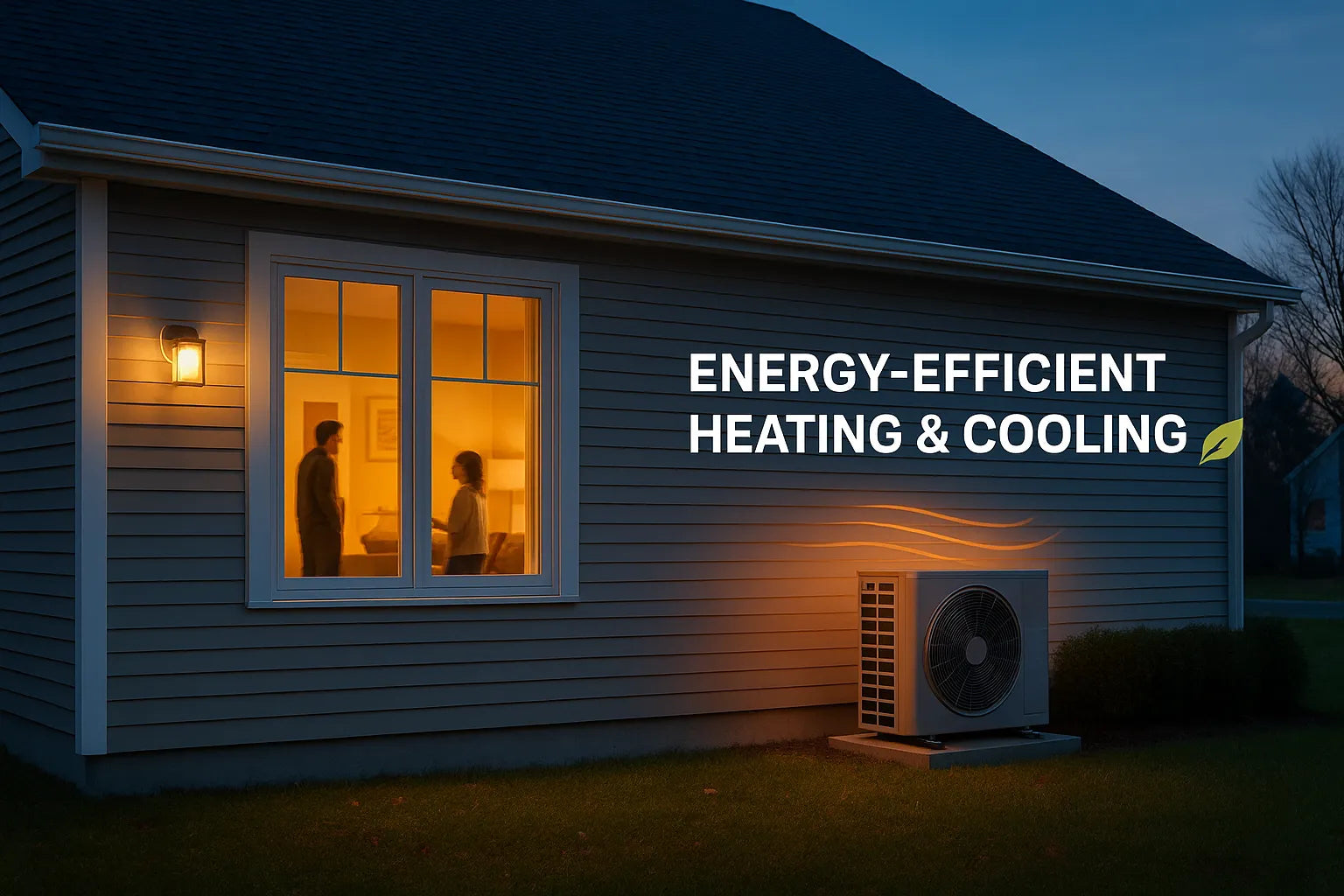How a Heat Pump Still Makes Heat at −20 °F
Modern units use inverter-driven compressors that throttle up or down instead of banging on and off. When paired with Enhanced Vapor Injection (EVI) or Electronic Refrigerant Injection, the compressor grabs latent heat others miss. Think of it like shifting your truck into a lower gear on a steep hill, more torque without stalling. Add a thermostatically controlled crankcase heater so oil never thickens, and you’ve got reliable starts no matter how nasty it gets.
For a visual walkthrough, see the schematics in our Help Center.
Key Features That Separate the 2025 Class
Look for ENERGY STAR Cold Climate certification: at least 70 % capacity retained at 5 °F and COP ≥ 1.75. Variable-speed fans, weather-sealed control boards, and corrosion-proof coil coatings round out the wish list. Models like Daikin’s VRV-L and Mitsubishi’s H2i® Plus meet or beat those benchmarks. Before you buy, compare spec sheets in our Design Center so you’re not paying for bells you’ll never ring.
Variable-Speed Compressors: Why Modulation Matters
Old-school single-stage pumps cycle like a light switch: full blast or dead off. That short-cycling spikes energy use and leaves rooms with temperature swings. A variable-speed (inverter) compressor ramps smoothly from 10 % to 100 % capacity, matching heat output to the exact load. The compressor also runs longer at low speed, which dries outdoor coils and slashes defrost time. Result: steadier indoor temps and up to 30 % lower kWh in deep winter. Want to see options? Browse our lineup of R-32 heat pump systems sorted by tonnage.
Advanced Refrigerants & Injection Tech Explained
R-32 and other low-GWP blends carry more heat per pound than legacy R-410A. Pair that with flash or vapor injection, and you boost mass flow through the evaporator without overheating the compressor. Picture adding a turbocharger to a small engine, same block, more power. In field tests at −31 °F, LG’s twin-rotary inverter with vapor injection kept 80 % of its nominal capacity. Curious about R-32 equipment for retrofits? Check our R-32 AC and coils collection.
Smart Defrost Cycles: Ice-Free, Not Energy-Free
Frost is the enemy. Every gram of ice on the outdoor coil blocks airflow and steals efficiency. Smart boards now read ambient temp, humidity, and coil pressure, then trigger defrost only when needed. Some brands pre-heat refrigerant so defrost finishes faster, cutting that chilly air blast you feel indoors. Regularly rinse debris off the outdoor unit, and schedule an annual coil cleaning—an easy add-on when ordering accessories.
Decoding COP and HSPF2 at Low Temperatures
The coefficient of Performance (COP) tells you how many units of heat you get per unit of electricity. A COP of 2 at 5 °F means you’re doubling your energy buck even in a blizzard. For seasonal numbers, check HSPF2: anything above 10 is excellent for cold zones. Compare lab-tested COP and the manufacturer’s “rated heating capacity at 5 °F” line item; that combo predicts real-world bills better than SEER ratings alone.
ENERGY STAR Cold-Climate Certification Checklist
Not every blue label is equal. Cold-climate badges require proof of:
-
≥ 70 % capacity retention at 5 °F
-
COP ≥ 1.75 at 5 °F
-
Verified defrost logic and crankcase protection
-
Warranty that covers sub-freezing operation
If the spec sheet doesn’t hit those numbers, keep shopping. The extra testing saves headaches and emergency heater bills down the road.
When to Add Backup or Hybrid Heat
In Fairbanks or northern Maine, even the best pump may need help below −25 °F. Many systems ship with a 5 kW–15 kW electric strip that kicks in automatically. Another route is a dual-fuel setup: the pump handles shoulder seasons; a high-efficiency gas furnace (see our furnace selection) jumps in for polar nights. A hybrid thermostat orchestrates the switchover so you never notice.
Sizing & Installation: Pro Tips You Won’t Hear at the Big-Box Store
Rule-of-thumb sizing is dead. Have a Manual J load run or use our free Design Center tool to nail the tonnage. Undersized by more than 10 %, and strips will run nonstop. Oversized, and you’ll short-cycle. Mount the outdoor unit 12 in. above the snow line, slope the drain pan, and route the condensate line with heat tape. Those tiny details keep refrigerant lines clear and your warranty intact.
Maintenance & DIY Troubleshooting for Arctic Weather
Once a month, brush snow off the top grille and check side clearances. Every fall, replace indoor filters and tighten electrical lugs after power is off. If you hear a loud hum followed by a hard stop, it might be a frozen crankcase check that the heater element. Many homeowners like the plug-and-play approach of DIY ductless mini-splits; just remember to vacuum the line set to 500 microns before releasing refrigerant.
2025 Models Worth a Serious Look
-
Mitsubishi H2i® Plus – Flash injection keeps 100 % capacity at 5 °F; ideal for New England colonials.
-
LG Red Series – Twin-rotary compressor tested to −31 °F; field-replaceable sensors cut downtime.
-
Lennox SL25XPV – Integrated iComfort thermostat and near-silent 55 dB outdoor rating for urban lots.
For multi-room flexibility, ductless options from our mini-split collection let you heat an addition without touching ductwork.
Frequently Asked Questions
Will a heat pump save money over my gas furnace?
In climates with winter averages above 0 °F, yes, especially with today’s utility rebates. Below that, a dual-fuel setup often wins.
Do I need electric strip heat?
It’s cheap insurance. Many homeowners disable the strip above 10 °F to avoid surprise spikes.
How loud are cold-climate outdoor units?
Most inverter models hover around 50–60 dB, about as loud as moderate rainfall.
What maintenance can I handle myself?
Change filters, hose down coils, and keep snow clear. Leave refrigerant work to a licensed tech.
Where can I get sizing help?
Use the free load-calc tool in our Design Center or chat with a pro via Contact Us.







